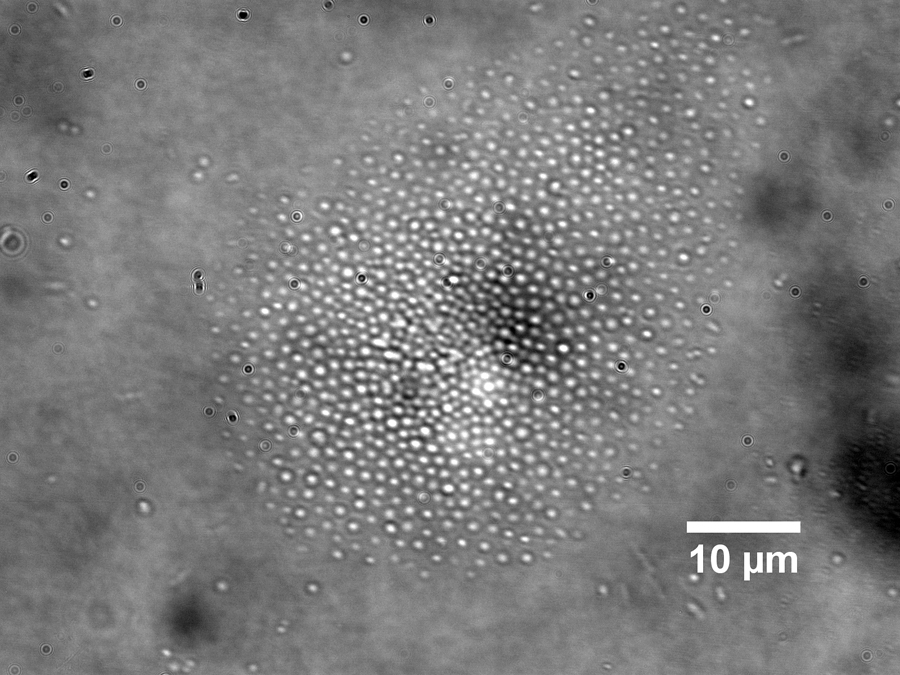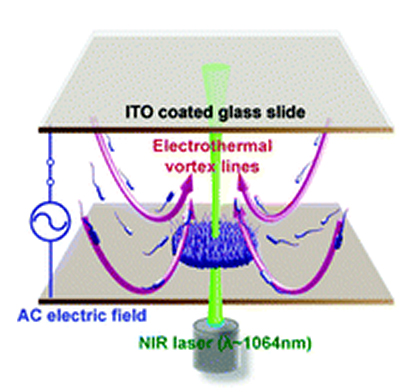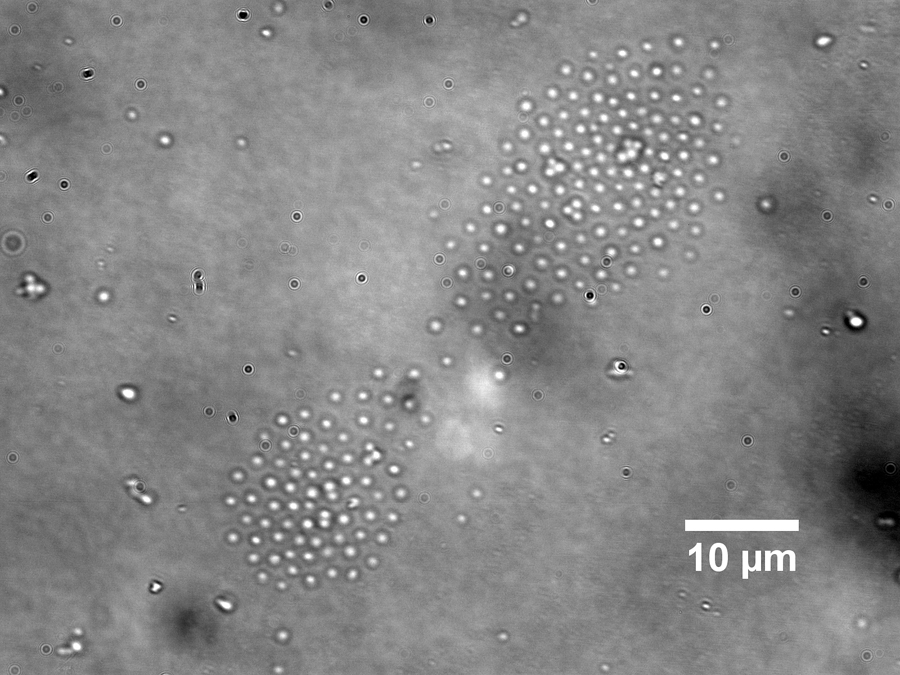Laser and electric fields generate whirlpools to separate microbes
January 9, 2013

Researchers have demonstrated a new technology that combines a laser and electric fields to create tiny centrifuge-like whirlpools to separate particles and microbes by size, a potential lab-on-a-chip system for medicine and research. Here the technique is used to collect a bacterium called Shewanella oneidensis. (Credit: Purdue University)
Researchers have used the newly developed “rapid electrokinetic patterning” (REP) method for the first time to collect microscopic bacteria and fungi, said Steven T. Wereley, a Purdue University professor of mechanical engineering.
REP combines a laser and electric fields to create tiny centrifuge-like whirlpools to separate particles and microbes by size, a potential lab-on-a-chip system for medicine and research.
The technology could bring innovative sensors and analytical devices for lab-on-a-chip applications, or miniature instruments that perform measurements normally requiring large laboratory equipment.
REP is a potential new tool for applications including medical diagnostics; testing food, water and contaminated soil; isolating DNA for gene sequencing; crime-scene forensics; and pharmaceutical manufacturing.
“The new results demonstrate that REP can be used to sort biological particles but also that the technique is a powerful tool for development of a high-performance on-chip bioassay system,” Wereley said.
How it works

(Credit: Jae-Sung Kwon et al./Lab on a Chip)
The technology uses a highly focused infrared laser to heat fluid in a microchannel containing particles or bacteria.
An electric field is applied, combining with the laser’s heating action to circulate the fluid in a “microfluidic vortex,” whirling mini-maelstroms one-tenth the width of a human hair that work like a centrifuge to isolate specific types of particles based on size.
Particles of different sizes can be isolated by changing the electrical frequency, and the vortex moves wherever the laser is pointed, representing a method for positioning specific types of particles for detection and analysis.
The researchers used REP to collect three types of microorganisms: a bacterium called Shewanella oneidensis MR-1; Saccharomyces cerevisiae, a single-cell spherical fungus; and Staphylococcus aureus, a spherical bacterium. The new findings demonstrate the tool’s ability to perform size-based separation of microorganisms, Wereley said.

Here the rapid electrokinetic patterning technique is used to arrange bacteria into a specific pattern. The technique may be used as a tool for nanomanufacturing because it shows promise for the assembly of suspended particles, called colloids. The ability to construct objects with colloids makes it possible to create structures with particular mechanical and thermal characteristics to manufacture electronic devices and tiny mechanical parts. (Credit: Purdue University)
“By properly choosing the electrical frequency we can separate blood components, such as platelets,” he said. “Say you want to collect Shewanella bacteria, so you use a certain electrical frequency and collect them.
Then the next day you want to collect platelets from blood. That’s going to be a different frequency. We foresee the ability to dynamically select what you will collect, which you could not do with conventional tools.”
The overall research field is called “optoelectrical microfluidics.” More research is needed before the technology is ready for commercialization.
Applications
Purdue researchers are pursuing the technology for pharmaceutical manufacturing, Wereley said, because a number of drugs are manufactured from solid particles suspended in liquid. The particles have to be collected and separated from the liquid. This process is now done using filters and centrifuges.
REP also might be used to diagnose the presence of viruses, although it has not yet been used to separate viruses from a sample, Wereley said.
Unlike conventional tools, REP requires only tiny samples, making it potentially practical for medical diagnostics and laboratory analysis.REP may also be used as a tool for nanomanufacturing because it shows promise for the assembly of suspended particles, called colloids. The ability to construct objects with colloids makes it possible to create structures with particular mechanical and thermal characteristics to manufacture electronic devices and tiny mechanical parts.
REP might also be used as a tool for nanomanufacturing because it shows promise for the assembly of suspended particles, called colloids. The ability to construct objects with colloids makes it possible to create structures with particular mechanical and thermal characteristics to manufacture electronic devices and tiny mechanical parts.